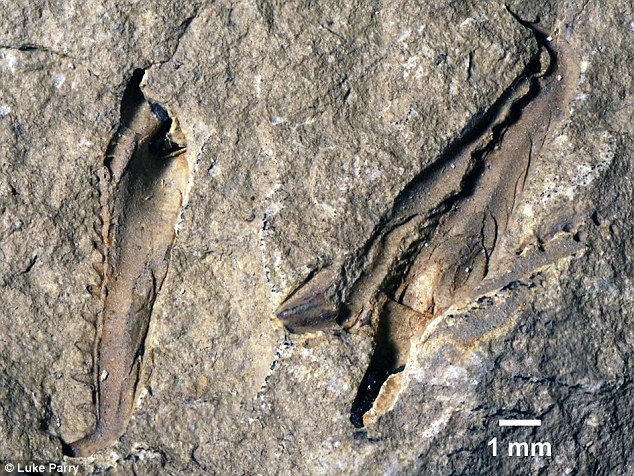At https://phys.org/print406885152.html … we have a primordial giant worm with snapping jaws. Worms are usually measured in inches but this worm was two or three metres in length. The lead author of the study, Mats Eriksson, says it represents a case of gigantism, a poorly understood phenomenon. In this case gigantism belongs to the Palaeozoic, 400 million years ago. The same story is at www.dailymail.co.uk/sciencetech/article-4242734/Worm-two-metres-long-dsi… … (sent in by Robert Farrar).

At http://crev.info/2017/02/fossils-destroy-human-evolution-story-again/ … http://crev.info/2017/02/fossils-too-detailed-to-be-old/ .. and lastly, http://www.icr.org/article/9841 … also sent in by Robert Farrar. These sort of things do not appear very often in mainstream literature and for that reason are interesting – although the conclusions reached should be treated with caution. Creationist organs like this are really quite belicose about evolution and appear to be in a time warp as they generally ignore the idea of punctuated evolution (a feature of catastrophism) that can readily explain some of these anomalies. Having said that the Creationists are providing some good examples of where mainstream has problems – and catastrophists are therefore able to take advantage of their due diligence and reach different conclusions.
The first link explores skull shape in early humans such as the Neanderthals and their immediate predecessors. It seems these early examples of humans have surprisingly human like faces – although Neanderthals may have had big noses. Heidelberg Man is included in the study which takes us back several hundred thousand years on mainstream chronology. In other words, the author is telling us that Neanderthals and Heidelberg were far from ape like and therefore those text book illustrations of the descent of man to ape are wrong. The image of this line of descent goes back a long way – long before modern investigation of the Neanderthals for example, where it has increasingly been found they were virtually advanced as the first modern humans (Homo sapien sapiens). One could argue that all humans from Homo erectus onwards were very human like in facial structure and in their general activity and technology so there is nothing revolutionary about what is being said – apart from the caveat at the end that claims this means humans were created by God than by evolution.
The second link looks at fossils – such as trilobites with eggs. Funny subject but I was at a geological talk and fossil handling event a short time ago and a number of trilobite fossils were passed around – including one that clearly had eggs newly laid. It must have been preserved extremely quickly. The line in the Creationist link is that few fossils have preserved their soft parts and in order to do so they must have been fossilised recently. On the mainstream scale soft parts have been fossilised up to 600 million years ago. I suppose it depends on how quickly the animals concerned were buried and in what kind of sediment. For example live frogs have been seen to jump out of mudstone that has been quarried with a geologists hammer. They could only have been preserved if their life system had shut down due to hibernation – otherwise they represent an even bigger problem for both Creationists (mudstones can be very old) and mainstream alike. Catastrophism is able to explain their rapid burial and preservation – but hibernation can only explain the fact they were brought back to life with the appearance of daylight (and warmth).
The third article is bout dinosaur eggs – and the claim is they are not bird like (as in birds eggs). We are told they resemble reptile eggs and the inference made by the Creationists is that dinosaurs could not have evolved into birds. However, it is the bone density of dinosaurs that resembles birds so this is probably a red herring, and comparisons have been made with ostrich eggs rather than the small eggs of songbirds.
